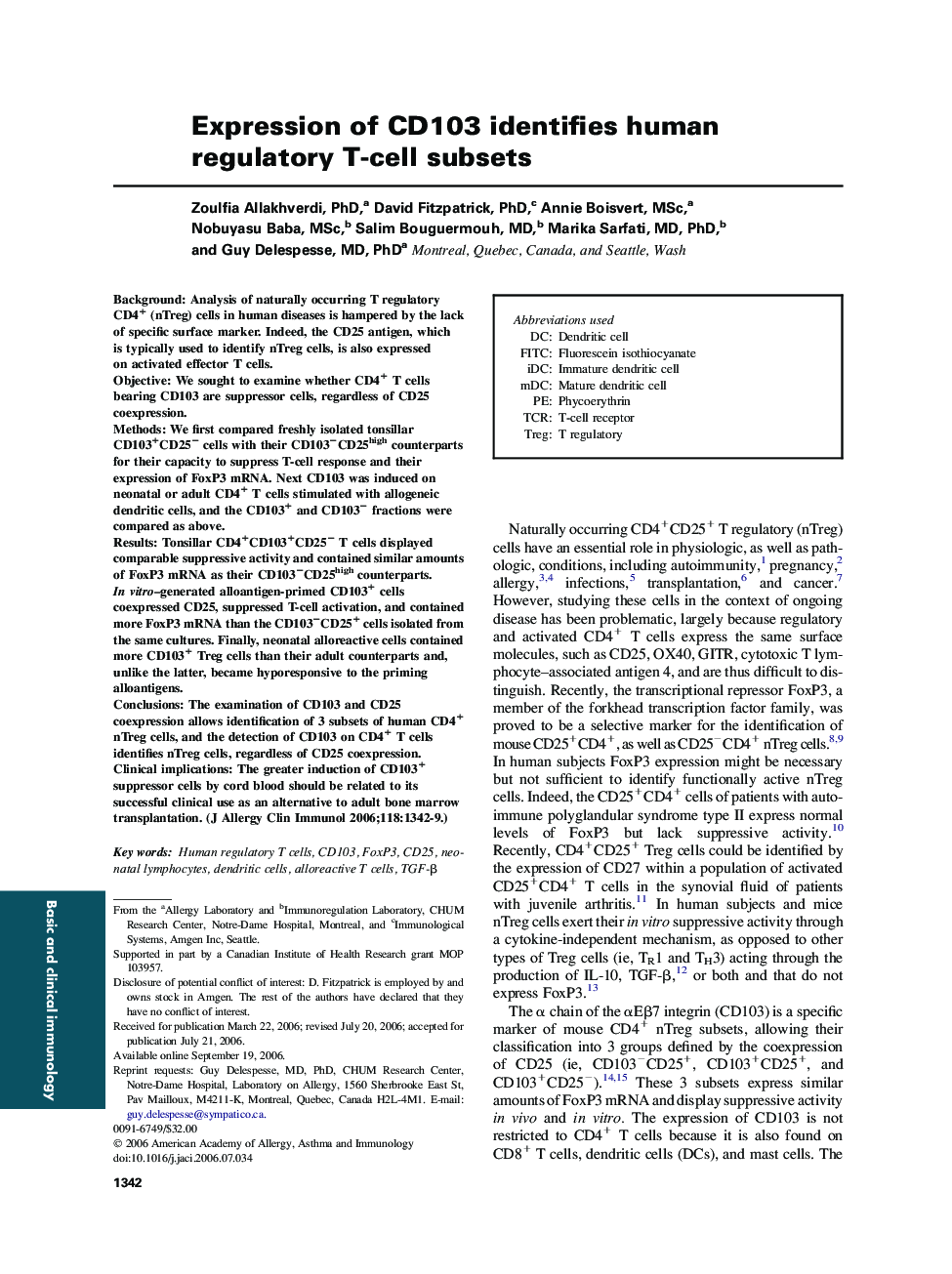| Article ID | Journal | Published Year | Pages | File Type |
|---|---|---|---|---|
| 3202236 | Journal of Allergy and Clinical Immunology | 2006 | 8 Pages |
BackgroundAnalysis of naturally occurring T regulatory CD4+ (nTreg) cells in human diseases is hampered by the lack of specific surface marker. Indeed, the CD25 antigen, which is typically used to identify nTreg cells, is also expressed on activated effector T cells.ObjectiveWe sought to examine whether CD4+ T cells bearing CD103 are suppressor cells, regardless of CD25 coexpression.MethodsWe first compared freshly isolated tonsillar CD103+CD25− cells with their CD103−CD25high counterparts for their capacity to suppress T-cell response and their expression of FoxP3 mRNA. Next CD103 was induced on neonatal or adult CD4+ T cells stimulated with allogeneic dendritic cells, and the CD103+ and CD103− fractions were compared as above.ResultsTonsillar CD4+CD103+CD25− T cells displayed comparable suppressive activity and contained similar amounts of FoxP3 mRNA as their CD103−CD25high counterparts. In vitro–generated alloantigen-primed CD103+ cells coexpressed CD25, suppressed T-cell activation, and contained more FoxP3 mRNA than the CD103−CD25+ cells isolated from the same cultures. Finally, neonatal alloreactive cells contained more CD103+ Treg cells than their adult counterparts and, unlike the latter, became hyporesponsive to the priming alloantigens.ConclusionsThe examination of CD103 and CD25 coexpression allows identification of 3 subsets of human CD4+ nTreg cells, and the detection of CD103 on CD4+ T cells identifies nTreg cells, regardless of CD25 coexpression.Clinical implicationsThe greater induction of CD103+ suppressor cells by cord blood should be related to its successful clinical use as an alternative to adult bone marrow transplantation.
